Results 1 to 10 of 17
-
07-22-2014, 08:35 PM #1
 Information about origin "Orihi" kamisori?
Information about origin "Orihi" kamisori?
Hi there!
A while ago there was a thread about "Orihi" kamisori:
http://straightrazorpalace.com/razor...sori-help.html
After my first
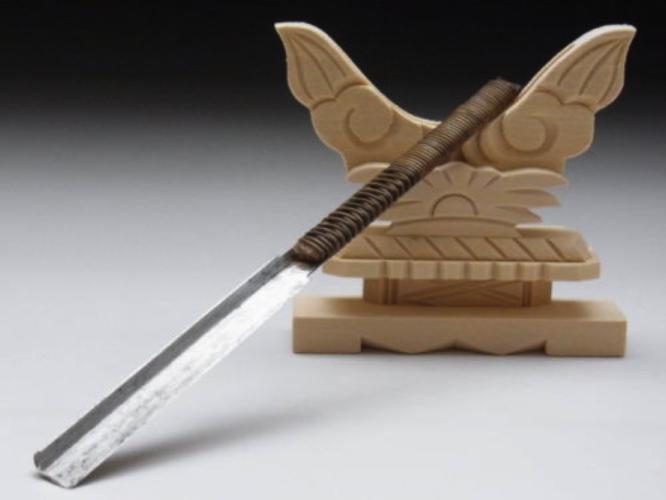
I've ordered a second one
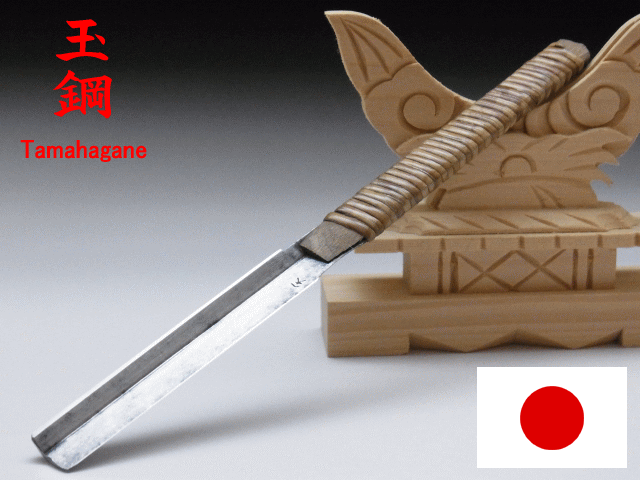
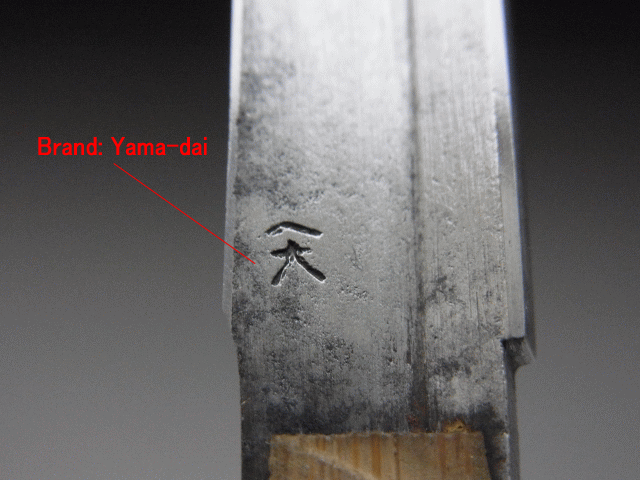
and also required a bit more information below,
if someone knows more information about these strange things, please share it ,
,
especially how old they are, most sources say from the "Edo period", that is: 1603 - 1867,
Sources below suggest the same:
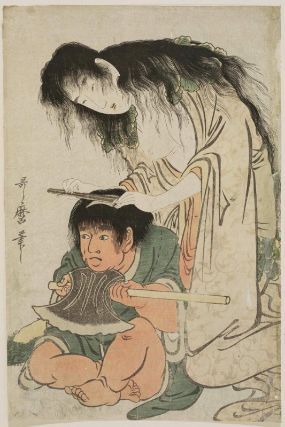
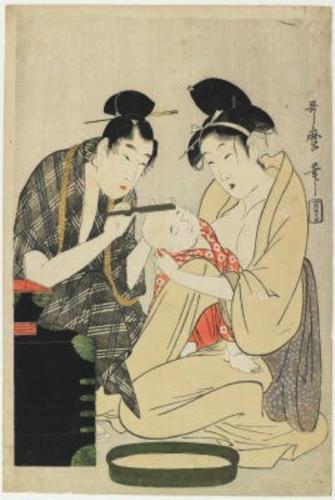
Edo period Artist Kitagawa Utamaro I, Japanese,
first: (?)–1806,
second: 1801
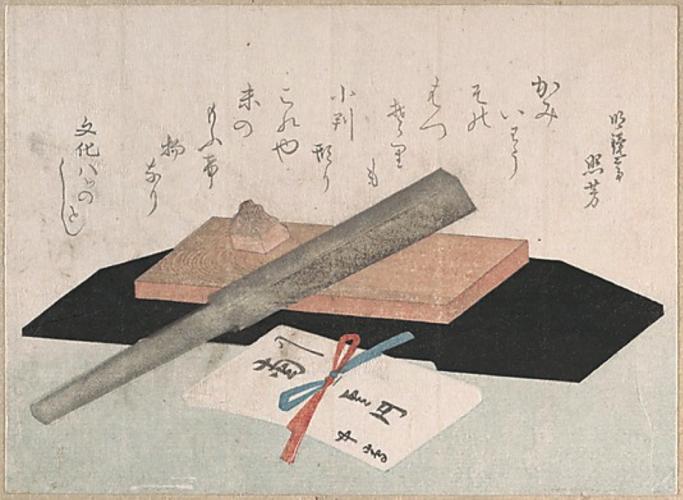
A Whetstone with a Razor, and an Envelope for a Present
Unidentified Artist
Period: Edo period (1615–1868)
Date: 1811
Culture: Japan
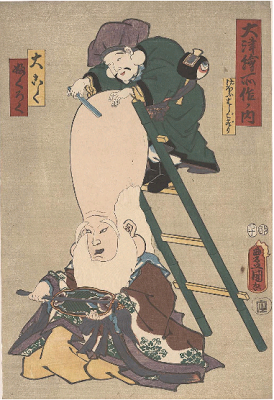
shaving the top of Fukuroku's head,
Toyokuni Utagawa III, Artist, 1857
During the Heian period (794 to 1185 A.D.!)
the practice of okimayu (置眉 or おきまゆ) began.
This involved the shaving off the eyebrows and replacing them
with fake ones painted on higher up on the forehead.
It lasted, in one form or another until
well into the Edo period.
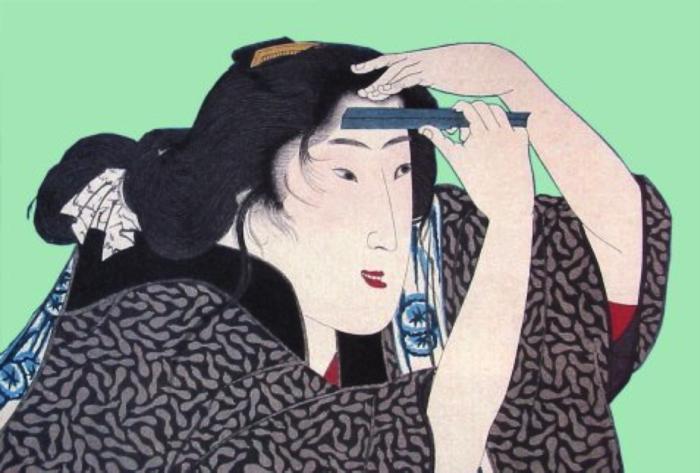
Link:
Kesa thru Kodansha
-
-
07-25-2014, 01:10 PM #2Senior Member

- Join Date
- May 2013
- Location
- United Kingdom
- Posts
- 207
Thanked: 24
Thanks for these pictures. I've been looking for photos of old kamisori like this, but never seen any.
As for kamisori, I've read that their style has been around for thousands of years, originally made for monks to shave their heads. Because of the difficulty in getting good steel in ancient Japan, the inside of a kamisori is made of low quality steel, to give it some bulk, and then only the outside has good steel. Because of this, they generally don't last as long as a western straight, though could still outlast a person.
The kamisoris also have am uneven grind, giving it a better edge. Some people say that only one side should be used, as shaving was done by a barber or a wife, while others say that they are made to be used on both sides. I personally think that they were supposed to be used by one person on another, but made so that one person could do it to themself, using both sides, if no one else was around.
Tamahagane is the highest quality steel available in Japan. It's usually reserved specifically for the traditional and best craftsmen, traditionally used for making samurai swords. It's made by smelting black sand from certain beaches. As it's such a prestigious steel, I think a western equivalent would be damascus, any item made from it would be stamped with it, as a selling point. Because of that, I don't think the one you have is tamahagane.
There may be some mistakes in what I've said, but when some if the more experienced members turn up, they'll be able to answer any questions you have.
I'm on my phone tight now, but if you put "kamisori monks" into Google and click the first and this links, there's some good information there. Should be sharpologist and easternsmooth.
That kamisori in the last pic actually looks double bladed... Can anyone confirm this?Last edited by Amenrab; 07-25-2014 at 01:26 PM.
-
The Following User Says Thank You to Amenrab For This Useful Post:
Fikira (07-25-2014)
-
07-25-2014, 03:50 PM #3

Indeed, I am aware it wouldn't be Tamahagane, was just on the pic...
But I think there are 2 distinct different styles, types of kamisori, the one "everybody" knows and the "Orihi" style, which are just 2 straight planes, as seen in the pics, with one edge.
I think the last, and other pics, are all examples of this style, and that is why I've shown you these pics, which would indicate that the "Orihi" style kamisori is an very old style, before the types we all know now, with rounded curves and hollowed ura and hollowed omote
at least, that's what I think...
Thank you for the information that is brought, very interesting!Last edited by Fikira; 07-25-2014 at 03:52 PM.
-
07-25-2014, 04:32 PM #4Senior Member

- Join Date
- Apr 2014
- Location
- Yorkshire , England
- Posts
- 356
Thanked: 44
Tamahagane is NOT the best steel produced by Japan, at one time it was but not now. Japan does produce some very good steels though.
Tamahagane's appeal is that it is a high carbon steel produced in a traditional way. So if it's a traditional kamasori you are after then one made of tamahagane is as close as you are going to get to replicate a razor made in ancient times
I can certainly understand it's appeal as most of us here are into traditional things but times change and the chaps at Hitachi would certainly have a thing to say about who makes the best steel
-
07-29-2014, 02:31 PM #5

Hi there,
my second one has arrived!
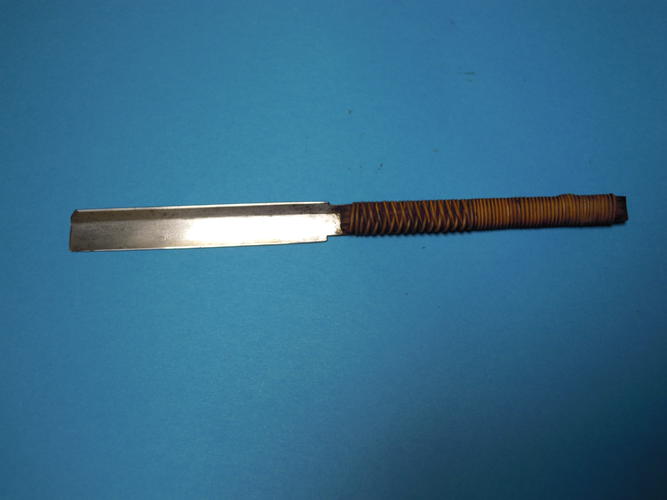
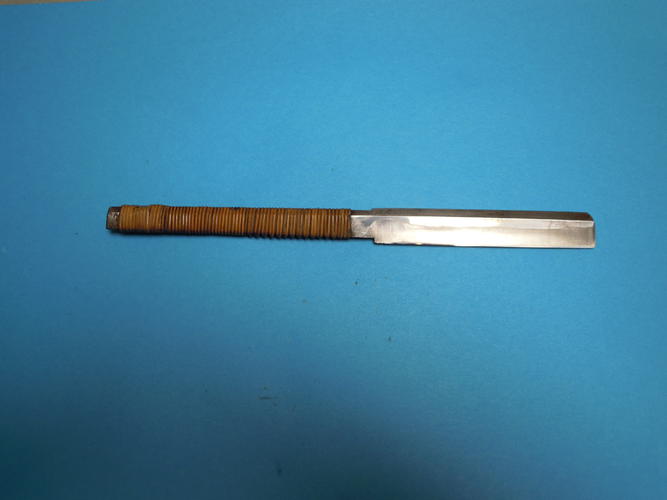
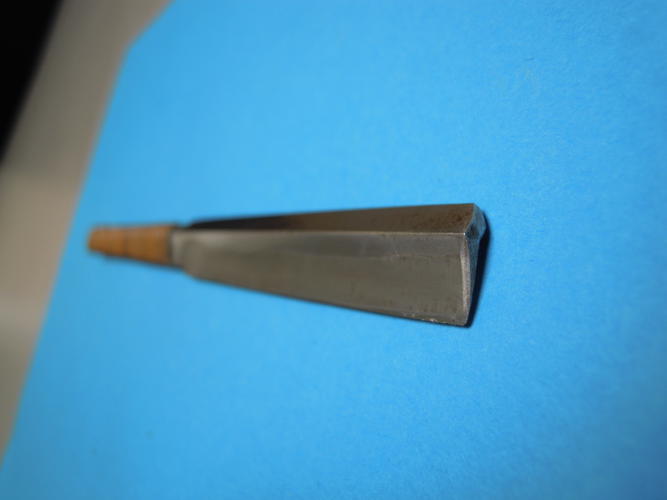
After some cleaning, I discovered folded steel!
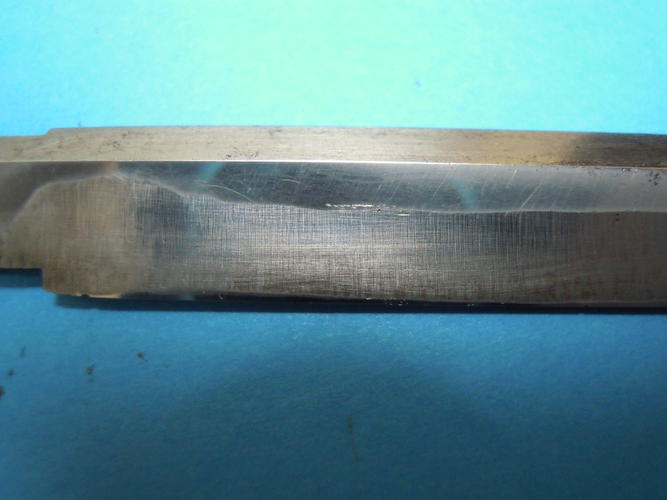
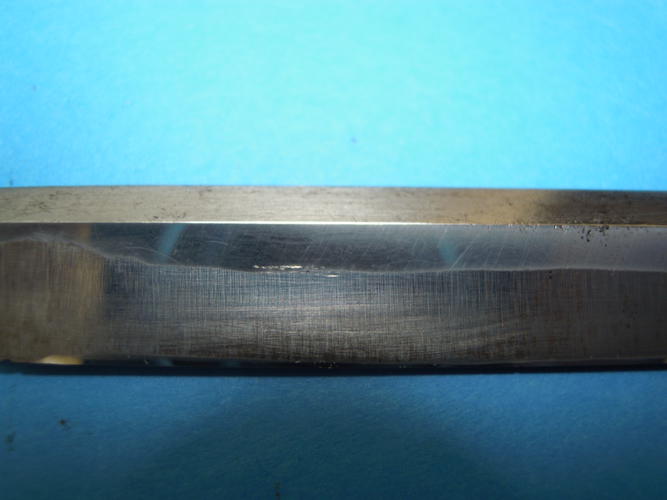
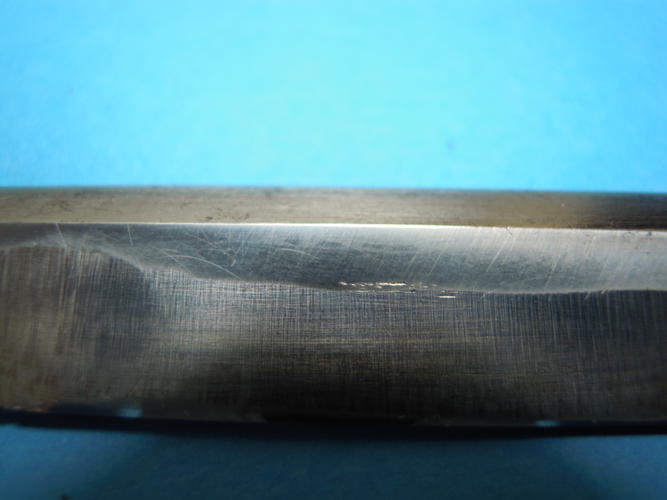
Sorry for the scratches and difficult visibility, but the waved cloudy lines should be clear I think
Now I wonder, these Orihi kamisori's are old!
Is it possible they were made in a time kamisori were always made of Tamahagane, or some type of folded steel,
and if it was, couldn't that be a reason there is no Tamahagane mark?
After all, the samurai swords didn't have a Tamahagane mark either,
is was evident what material was used then...
I really don't know... Just an idea...
-
05-30-2016, 11:48 AM #6

Some more information I gathered of the history of Orihi:
https://historyrazors.wordpress.com/...type-kamisori/
-
The Following 2 Users Say Thank You to Fikira For This Useful Post:
Geezer (05-30-2016), markbignosekelly (06-01-2016)
-
05-30-2016, 04:56 PM #7

I've never bought into this idea the razors were made to be used for shaving another person. Most of the pictures we see like the ones in this thread are folks being groomed and the razor is being used everywhere but for shaving the beard. Also most pictures show shaving nobility and the well healed and like the U.S most folks like that either go to a barber (or went) or have a servant to do it for them. I think the idea millions of Japanese had to have someone else shave them makes no sense.
I think sometimes we see something we don't understand and try and put our experiences into play to understand it and those experiences might be totally alien to the item we are observing.No matter how many men you kill you can't kill your successor-Emperor Nero
-
05-30-2016, 08:20 PM #8

Yes indeed, "Most of the pictures we see like the ones in this thread are folks being groomed and the razor is being used everywhere but for shaving the beard“, but "Robber Ishikawa Goemon Shaving”, artist, Kuniyoshi (1797-1861), 1851 and “Mustache shaving, opposite mirrors, laughing child, crying child” , artist: Kobayashi Kiyochika, 1883 shows us the use of the Orihi for shaving THE BEARD.
You can see the rest as references to find the right time frame when they were made…
-
06-01-2016, 04:22 AM #9

Here's a few interesting google-oid facts.
Japanese men are generally not hirsute types & due to beards being fashionable in the Edo period (some 260 years) fake facial hair was sold.
The Meiji restoration also saw Japanese men embrace the beard. So for hundreds of years of Japanese history, men simply did not shave.
Single bevel tools take a screaming sharp edge & are easy to maintain that way as opposed to a double bevel. This is the reason J/kitchen knives, chisels & razors are constructed that way. There are even single bevel machetes in Japan tho the double bevel is generally considered more sturdy & was used for military weapons.The white gleam of swords, not the black ink of books, clears doubts and uncertainties and bleak outlooks.
-
06-01-2016, 09:58 AM #10

Indeed, I've read this as well, although some Japanese works do show shaven men
(maybe it was in the later Edo period, I don't know...)
For example this work, Portrait of a man of noble birth with a book,
made by Katsushika Hokusai (1760-1849), clearly shows a shaven beard:
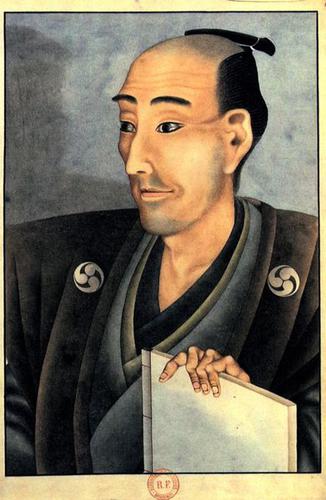
https://en.wikipedia.org/wiki/Chonmage
https://commons.wikimedia.org/wiki/F...ith_a_book.jpg
To be clear, I do not want to proof that Japanese men were shaven earlier, far from it, for now I had only 2 goals:
The first goal was to proof that men were indeed shaven in the past with Orihi,
I think I have proven this with the woodblock prints of 1851 & 1883, maybe also with the print of 1842 (not sure about that)
The second goal was merely to set a timeframe where the Orihi was used.
Yes, most probably it was used primarily for head and eyebrow shaving, and not for beard shaving,
but I used this information only to proof how old the Orihi could be.
Meaning, when looking to a Orihi, one can now say it once was used for shaving
(maybe most of the time not primarily, but still), and it could be made in the 19th century,
or even older, 18th century or older)
I've seen such single bevel machetes, they look really nice! And yes, the single bevel can get screaming sharp!


 14Likes
14Likes LinkBack URL
LinkBack URL About LinkBacks
About LinkBacks






 Reply With Quote
Reply With Quote

